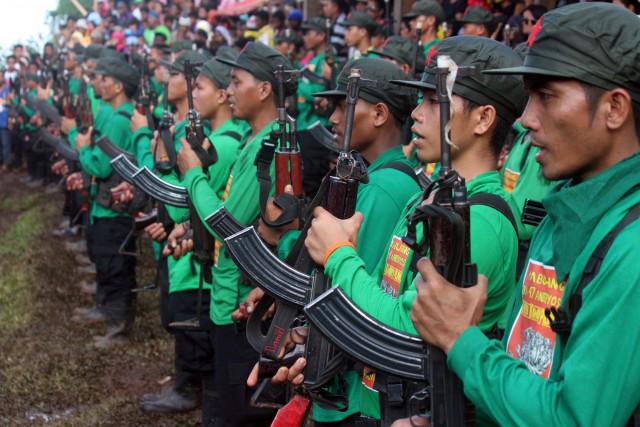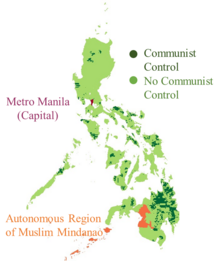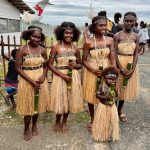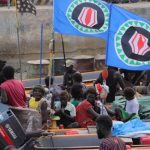The New People’s Army (NPA) is one of the longest-running insurgencies in the world, and yet it remains one of the least understood. Emerging from the tumultuous political landscape of the Philippines in the late 1960s, the NPA has been at the center of a conflict that has spanned decades, shaping the lives of millions across the archipelago.
While some view them as revolutionaries fighting for the oppressed, others see them as criminals whose actions have caused suffering and instability. Let’s delve into the history, motivations, and controversies surrounding the NPA to better understand their role in the Philippines’ forgotten war.
Origins and Ideology
The New People’s Army was founded in 1969 as the armed wing of the Communist Party of the Philippines (CPP). Inspired by Marxist-Leninist-Maoist principles, the NPA sought to overthrow the government and establish a communist state. Their ideology was rooted in addressing the systemic inequalities in Philippine society, particularly the concentration of wealth and land in the hands of a few elite families.
Initially, the NPA garnered significant support from rural communities, where poverty and landlessness were rampant. They positioned themselves as defenders of the oppressed, advocating for land reform, workers’ rights, and social justice. Their message resonated with many, particularly during the years of Ferdinand Marcos’ dictatorship (), when political repression and economic hardship were widespread.

The NPA in Action
At its height in the 1980s, the NPA’s influence extended across vast swathes of the Philippines, with tens of thousands of fighters and an extensive network of supporters. They operated primarily in rural areas, conducting guerrilla warfare against government forces. Their tactics included ambushes, raids, and sabotage, often targeting military installations and infrastructure.
In addition to their military activities, the NPA established parallel “people’s governments” in areas under their control. These local structures implemented land redistribution, resolved disputes, and provided basic services. For many in remote areas neglected by the state, the NPA offered a semblance of governance and justice.

Controversies and Criticisms
While the NPA’s early years were marked by widespread support, their reputation has become increasingly polarized over time. Allegations of human rights abuses, including summary executions, forced recruitment, and extortion, have tarnished their image.
One of the most contentious practices attributed to the NPA is the collection of “revolutionary taxes” from businesses and individuals. Critics argue that this amounts to extortion, with those who refuse to pay facing threats or violence. The group has also been implicated in attacks that have caused civilian casualties, further eroding public sympathy.
Moreover, as the Philippines has modernized, some argue that the NPA’s ideological appeal has waned. The rise of social media and improved access to education and economic opportunities in some areas have shifted public perceptions. While the NPA continues to present itself as a revolutionary force, many now view them as an outdated relic of a bygone era.
Click to read about communist in Nepal.
Support and Enduring Appeal
Despite the controversies, the NPA still commands loyalty in certain sectors of society. In areas where poverty and inequality persist, their message of social justice and land reform continues to resonate. For communities marginalized by the state, the NPA’s presence offers protection and a voice against perceived exploitation.
The group’s ability to adapt to changing circumstances has also contributed to its survival. While their numbers have declined from their peak, the NPA remains active in various regions, particularly in Mindanao and parts of Luzon and the Visayas. Their resilience is a testament to the deep-seated issues that continue to plague the Philippines, including poverty, corruption, and social inequality.
The Path Forward
The Philippine government has pursued both military and political solutions to address the NPA insurgency. Peace talks have been held intermittently over the years, with varying degrees of success. However, a lasting resolution remains elusive.
For many observers, the NPA’s continued existence underscores the need for systemic reforms. Addressing the root causes of the conflict—poverty, inequality, and lack of access to basic services—is seen as crucial to achieving lasting peace. At the same time, the NPA must grapple with its own contradictions and controversies if it hopes to regain the trust of the broader public.
Conclusion
The New People’s Army occupies a complex and contested place in Philippine history. Once hailed by many as liberators, they are now viewed by others as criminals. Their story is one of both hope and tragedy, reflecting the deep divisions and challenges that continue to shape the Philippines today. Whether they are seen as heroes or villains, the NPA’s enduring presence is a reminder that the struggle for justice and equality is far from over.
Click to check out our Philippines Tours.





